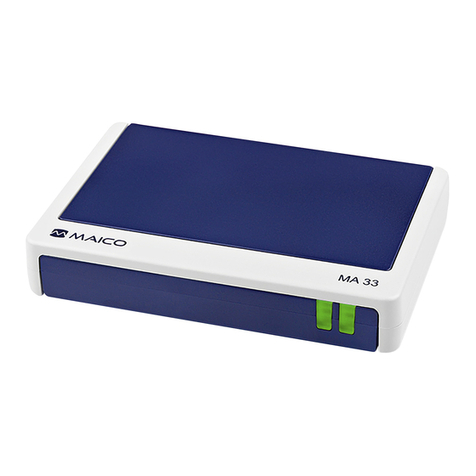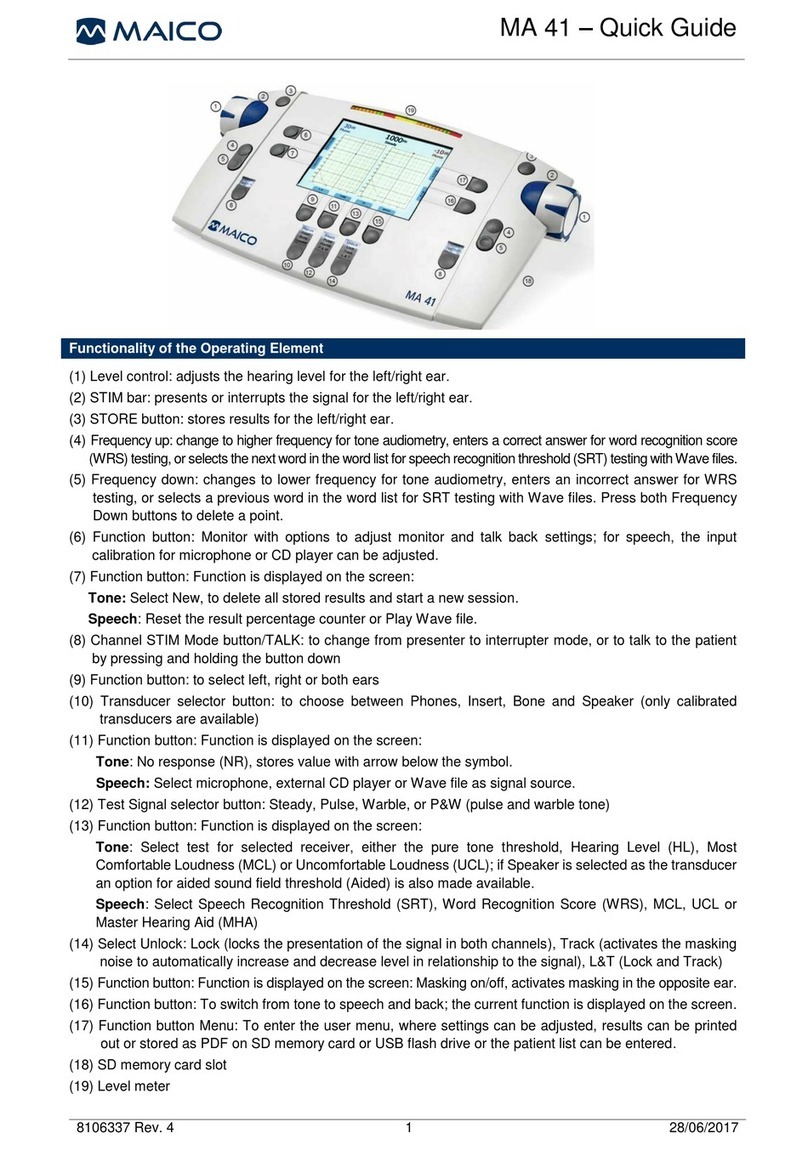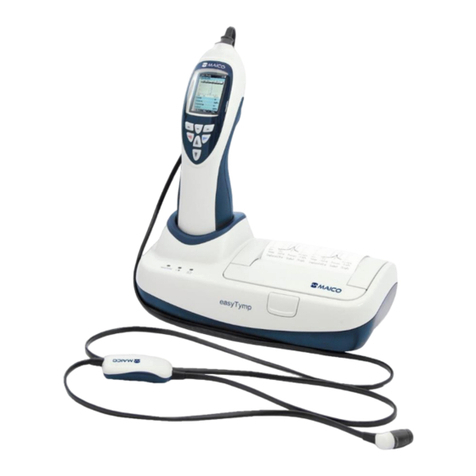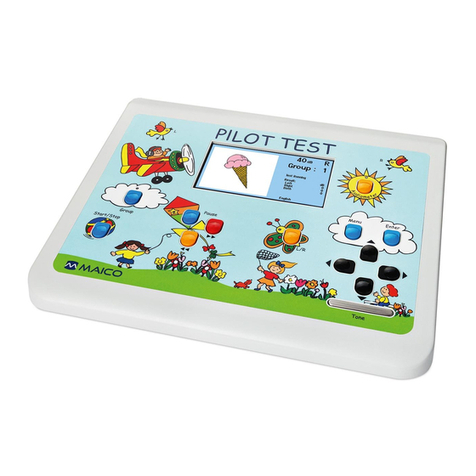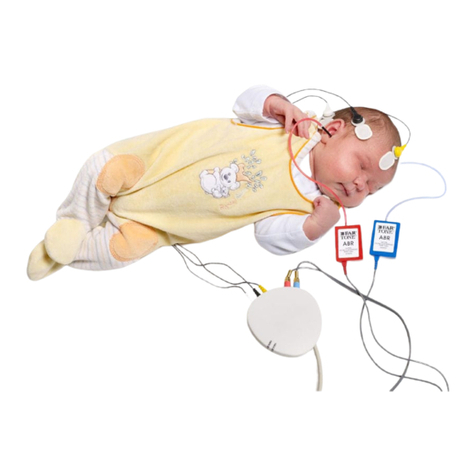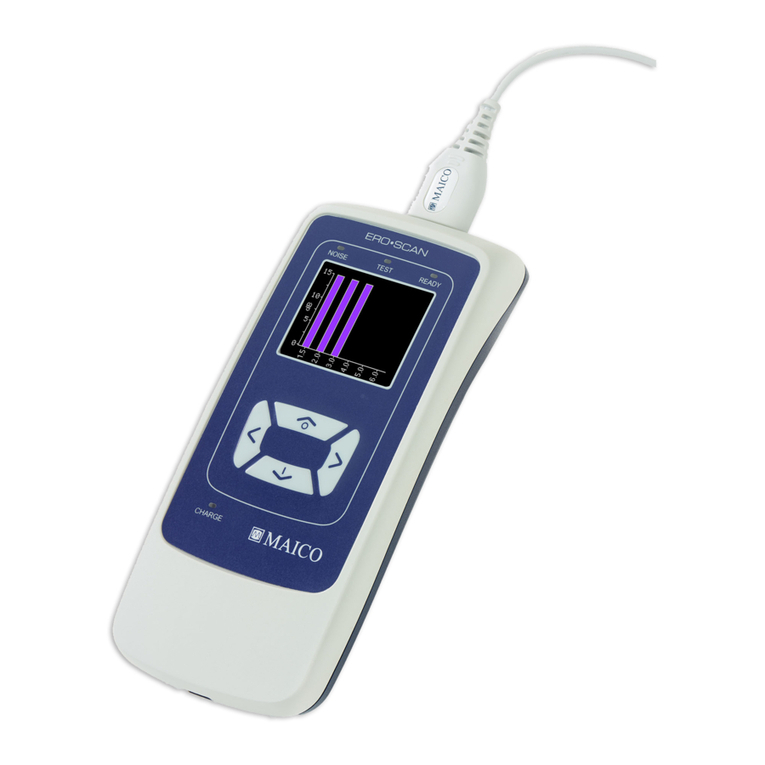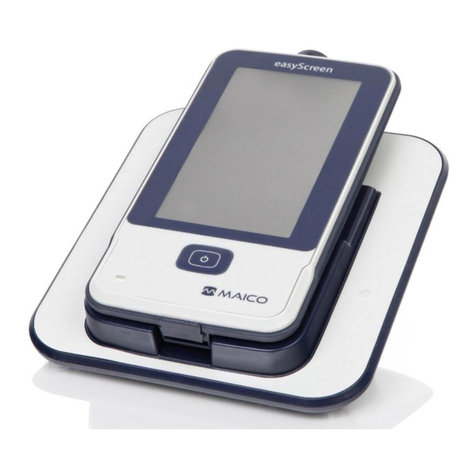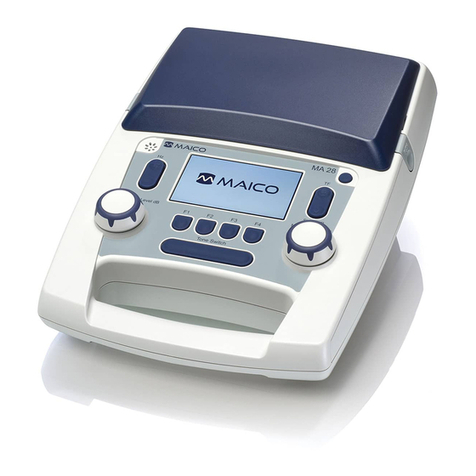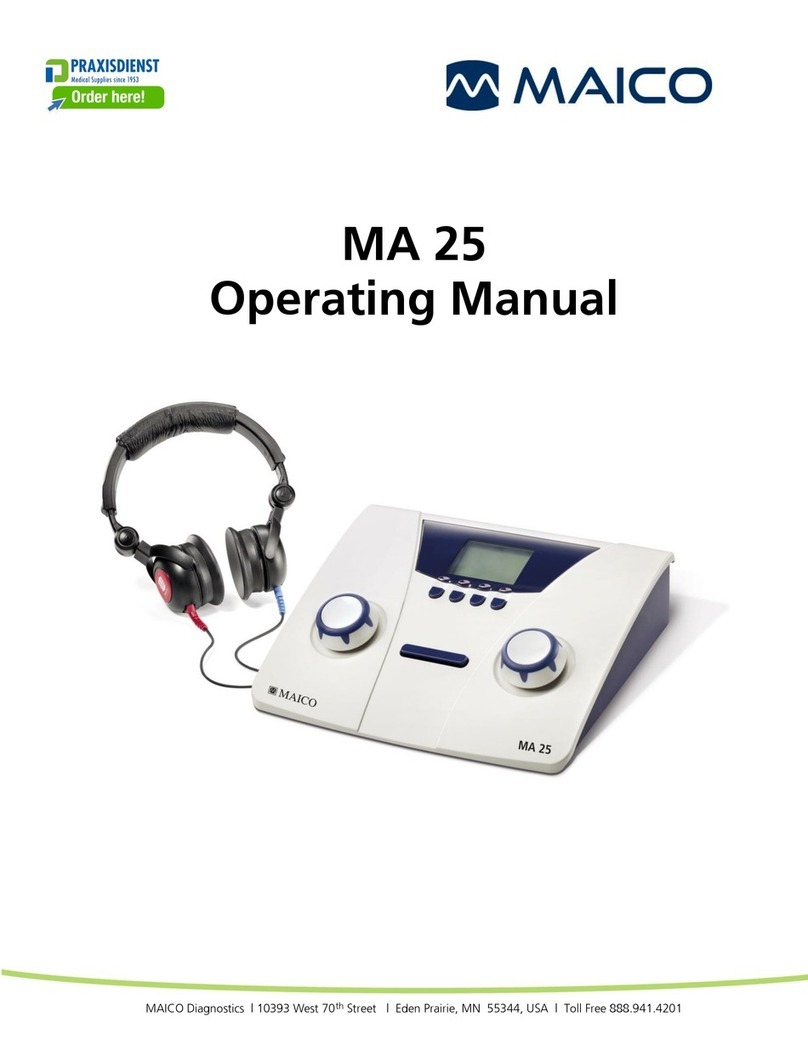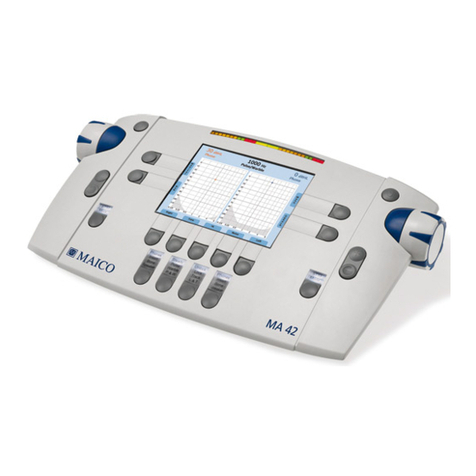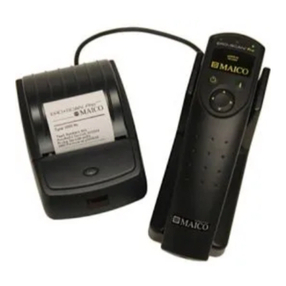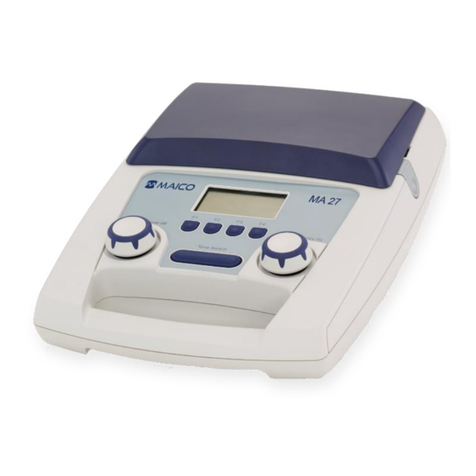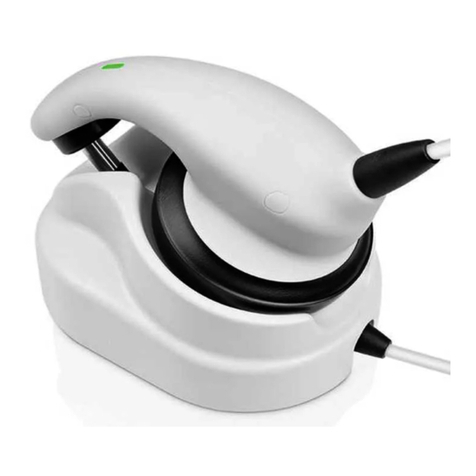
DE
5
• Beachten Sie die zulässige Tragfähigkeit des
Daches mit min. 200kg/m², bei schweren Ge-
räten min. 300kg/m².
• Bei Installationen auf Stahlträgern ist es unbe-
dingt erforderlich, dass diese Strukturen eine
natürliche Frequenz > 50% der Ventilatorge-
schwindigkeit aufweisen. Um ein Ausbreiten
von Vibrationen über das Fundament zu ver-
hindern, empfehlen wir den Einsatz schwin-
gungsdämpfender Unterlagen. Die Befesti-
gung erfolgt an den dafür vorgesehenen Stel-
len. Das Gehäuse und der innere Aufbau dür-
fen sich dabei nicht verformen.
• Beachten Sie die zulässigen Abstände zu Ge-
bäudekomponenten (für saug- und druckseiti-
ge Luftführungen):
1,5x Laufraddurchmesser als Wandabstand für
Anwendungen ohne Luftführung.
2,5x Laufraddurchmesser als Abstand der ers-
ten Kurve des Luftauslasses.
Interner Mindestkrümmungsradius der Kurven
gleich Rohrdurchmesser.
•Das Gerät darf nicht in Bereiche ausblasen,
in denen sich Personen oder Tiere befin-
den, damit weder heiße, ausgeblasene Luft
noch herausgeschleuderter Schmutz und
Kleinpartikel Verletzungen und Personenschä-
den verursachen können.
• Sorgen Sie für eine geeignete Belüftung des
Motors, wenn zum Beispiel bei langen Still-
standzeiten kein ausreichender Temperatur-
ausgleich für einen aufgeheizten Motor ge-
schaffen werden kann. Dies gilt auch für den
Gebrauch mit einem Frequenzumrichter.
Installieren Sie geeignete Kühlvorrichtungen,
falls die Belüftung nicht ausreicht. Eine fehlen-
de oder nicht ausreichend dimensionierte Küh-
lung kann zur Zerstörung des Gerätes führen.
• Berücksichtigen Sie die Mindestabstände für
Installations- und Wartungsarbeiten. Stellen
Sie sicher, dass ausreichend Platz für Installa-
tions-, Reinigungs- und Wartungsarbeiten zur
Verfügung steht. Beschränkte Platzverhältnis-
se können eine Gefahrenquelle darstellen.
• Beachten Sie die Abstände zu anderen Fassa-
denkomponenten, um Schallbrücken zum Bau-
körper zu vermeiden. Setzen Sie ggf. Entkopp-
lungselemente ein.
16.2 Montagehinweise
ACHTUNG Gerätebeschädigung bei bereits
vorinstallierter Leitungszuführung zum
Klemmenkasten.
Leitungszuführungen können beschädigt wer-
den, wenn an der Anschlussleitung gezogen
wird oder das Gerät an der Leitung angehoben
wird.
Nicht an Anschlussleitungen ziehen oder das
Gerät an den Leitungen anheben.
• zur Festinstallation in Kanälen mit zur Geräte-
type (Nennweite) passenden Kanalgrößen.
• zur Aufputzmontage an Dach mit ausreichen-
der Tragfähigkeit.
• Einbaulage beliebig, bei feuchten Räumen
nicht nach oben fördernd einbauen.
• für Be- oder Entlüftung, je nach Einbaulage.
• Geräteanschlusstutzen beidseitig für den di-
rekten Einbau in Kanälen.
• Für Reduzierstücke zum Anschluss an andere
Rohrdurchmesser → www.maico-ventilato-
ren.com.
• Weiteres Zubehör → www.maico-ventilato-
ren.com.
ACHTUNG An den Motor darf kein weiteres
Zubehör montiert werden.
GEFAHR Explosionsgefahr bei nicht ein-
gefetteten Zünddurchschlagswegen.
Vor der Befestigung des Deckels im Gehäuse
sicherstellen, dass die Verbindungsflächen sau-
ber und gefettet sind, z.B. Fett AGIPGRNS4
oder vergleichbares.
16.3 Prüfungen vor der Montage
1. Folgende Prüfungen durchführen: D = Detail-
prüfung, N = Nahprüfung, S = Sichtprüfung
Prüfplan D N S
I Gerät entspricht den EPL-/Zo-
nenanforderungen des Ein-
bauortes.
●●●
II Gerätegruppe richtig. ● ●
III Geräte Temperaturklasse rich-
tig. ● ●
IV Schutzgrad (IP-Grad) der Gerä-
te entspricht dem Schutzni-
veau / der Gruppe / der Leitfä-
higkeit.
●●●
V Geräte-Stromkreisbezeichnung
vorhanden und richtig. ●●●
VI Gehäuse und Verbindungen zu-
friedenstellend. ●●●
VII Vor dem Einbau die ordnungs-
gemäße Funktion der Motor-
lagerung prüfen.
●●●
Das Laufrad ist gemäß ISO14694 und ISO
1940-1 ausgewuchtet. Der Vibrationspegel
der Geräte wird ab Werk gemäß ISO14694
geprüft. Am Aufstellungsort muss nochmals
eine Prüfung des Vibrationspegels nach
ISO14694 vorgenommen werden (Schwing-
werte gemäß Kategorie und vorgeschriebe-
nen Grenzwerten).
• Prüfen Sie vor der Montage die Anwendungs-
kategorie der Geräte und die Vibrationsgren-
zen für Vor-Ort-Tests, insbesondere für die Be-
triebszustände Anlauf, Alarm und Stopp. Füh-
ren Sie eine Vibrationskontrolle durch und prü-
fen Sie die Schwingwerte nach der Inbetrieb-
nahme (ISO14694, BV-3, Veff. max. 4,5mm/
Sek.). Installieren Sie ggf. Komponenten zur
Vibrationsvermeidung.
• Installieren Sie erforderliche Befehlseinrichtun-
gen für Start, Stopp, Not-Aus oder Rückstel-
lung nach einem Not-Aus. Installationen sind
gemäß den Planungsunterlagen und einschlä-
gigen Bestimmungen (EN60079-14) vorzu-
nehmen.
• Installieren Sie eine Funktionsüberwachung
mit Alarmfunktion, um bei Störungen/Geräte-
ausfall Personen zu warnen und Sachschäden
zu vermeiden.
16.4 Gerätemontage
1. Gerät auf Transportschäden überprüfen.
2. Montageort für die Dachmontage vorbereiten:
Rohr verlegen. Bei Dachmontage für eine
ebene Auflagefläche sorgen.
3. Zulässige Netzleitung zum Montageort fest
verlegen. Zur Gerätetype passende An-
schlussleitung verwenden.
VORSICHT Gefahr durch Schnittverlet-
zungen durch scharfkantige Gehäusebleche.
Beim Einbau persönliche Schutzausrüstung
(schnittfeste Handschuhe) benutzen.
4. Gerät an den Montageort transportieren. Si-
cherheitshinweise und Daten der vorigen Ka-
pitel beachten.
GEFAHR Explosionsgefahr/Verletzungs-
gefahr durch falsch montiertes oder herab-
fallendes Gerät.
Dachmontage nur an Dächern mit ausreichen-
der Tragkraft und ausreichend dimensioniertem
Befestigungsmaterial vornehmen.
Das Befestigungsmaterial ist bauseitig bereitzu-
stellen.
Beim Einbau den Bereich unterhalb des Monta-
geortes von Personen freihalten.
5. Um Schallbrücken zum Baukörper zu vermei-
den, die Abstände zu anderen Fassadenkom-
ponenten beachten. Eventuell Entkopplungs-
elemente einsetzen.
6. Darauf achten, dass der Klemmenkasten am
Montageort frei zugänglich ist.
7. Gerät einbauen und an allen Flanschbohrun-
gen (4 Stück) fest mit dem Dach bzw. einer
geeigneten festen Unterlage verschrauben.
Ausreichend dimensioniertes Befestigungs-
material bauseitig bereitstellen. Auf Dreh- und
Förderrichtung achten → Luftrichtungspfeile
auf Geräteaufkleber.
GEFAHR Explosionsgefahr bei Betrieb
ohne Schutzvorrichtung bei eventuell in den
Luftkanal fallende oder angesaugte Fremd-
körper.
Lebensgefahr durch Funkenbildung.
Einen freien Luftein-/austritt unbedingt mit einer
Schutzvorrichtung versehen, die die Anforderun-
gen der EN13857 erfüllt und für Ex-Bereiche
geeignet ist, z.B. mit MAICO-Schutzgitter SG..
(Schutzart IP20 gemäß EN60529). Bei der Ver-
wendung von Nicht-Maico Produkten muss eine
Zündgefahrenbewertung durchgeführt werden.
8. Bei freiem Luftein- oder austritt vor dem Ge-
rät ein zugelassenes Schutzgitter montieren,
z.B. MAICO Schutzgitter SG.. .
9. Für ausreichende Zuluft-Nachströmung sor-
gen.
10.Geeignetes Isolations-, Schalldämmungs-
und Installationsmaterial anbringen.
17 Elektrischer Anschluss
GEFAHR Gefahr durch elektrischen
Schlag.
Vor Zugang zu den Anschlussklemmen alle Ver-
sorgungsstromkreise freischalten.
Gegen Wiedereinschalten sichern, Spannungs-
freiheit feststellen.
Erden und die ERDE mit kurzzuschließenden
aktiven Teilen verbinden.
Benachbarte, unter Spannung stehende Teile
abdecken oder abschranken.
Warnschild sichtbar anbringen.
Sicherstellen, dass keine explosive Atmosphäre
und/oder Staubschichten vorhanden sind.
17.1 Betriebsbedingungen
Betrieb nur zulässig, wenn folgende Bedingun-
gen erfüllt sind:
• Fest verlegte elektrische Installation.
• Für den Ex-Bereich und der Belastung zuge-
lassene Anschlussleitung.
• Netz-Trennvorrichtung mit min. 3mm Kontakt-
öffnung je Pol.
• Zulässige Spannung und Frequenz → Typen-
schild.
• Ex-Schutz-Klemmenkasten nach Norm
EN60079-1 (Ex"d") ist zu verwenden.
• Kabelverschraubungen nach Norm
EN60079-1 (Ex"d") sind zu verwenden.
• Schutzleiteranschluss, netzseitig im Klemmen-
kasten. Zur Erdung eines Rohrsystems befin-
det sich eine Klemme außen am Gerät.
